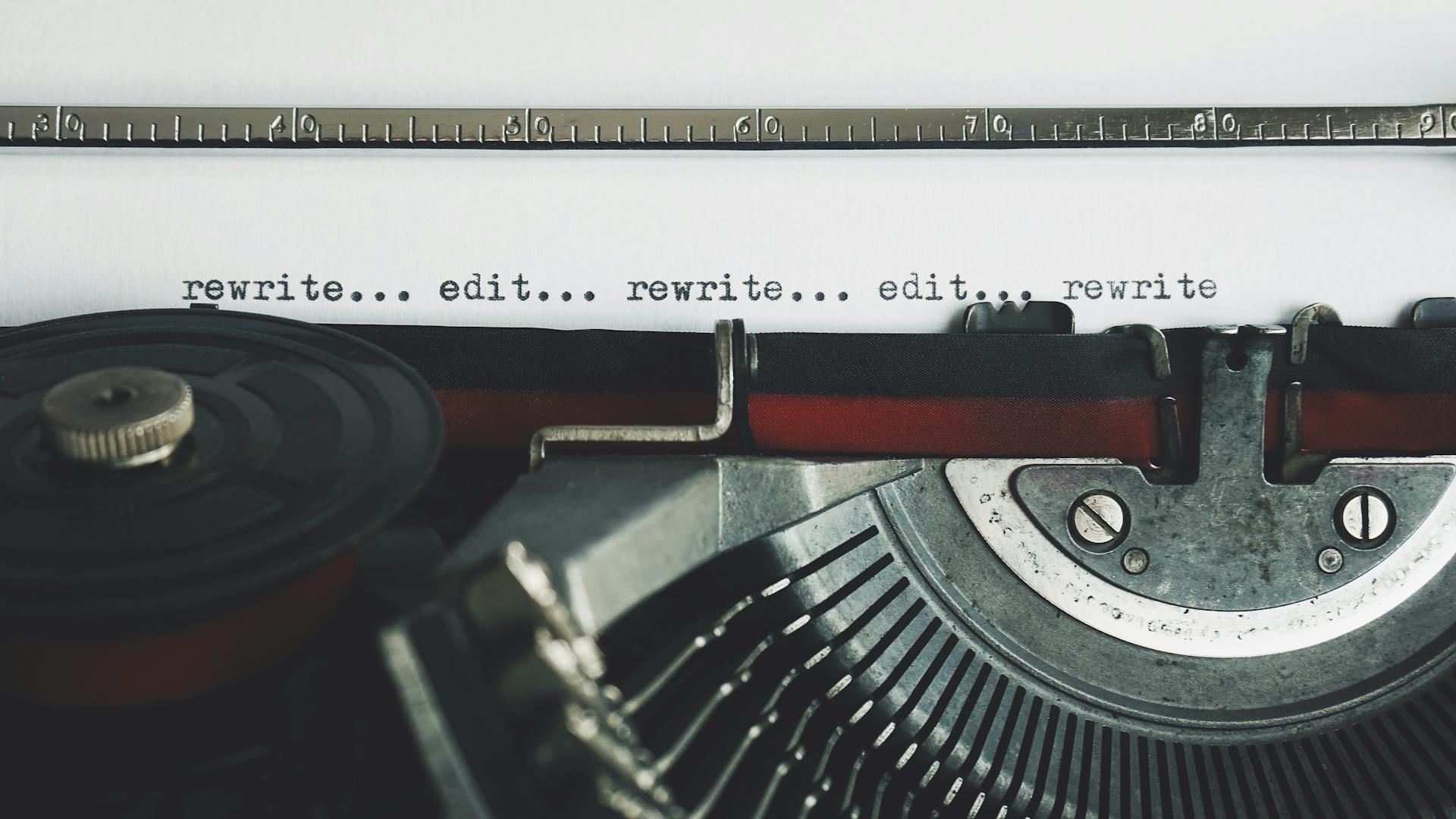
Writing letters in English is an important life skill that everyone should learn knowing its significance. In today's world of online communication and letter writing, the art of writing letters has become somewhat lost. However, it remains an important skill that can form stronger relationships and open up avenues of opportunities.
Whether you are applying for a job or just trying to keep in touch with old friends and family, knowing how to write letters is essential. Letters follow a similar format, but each type of letter has its own useful phrases and tips that can make all the difference. So let's learn some of the most important types of letters in English along with their specific phrases and tips for writing them effectively.
Check this out: The Writing Systems of Persian
Discover the Fascinating Way Letters Follow a Similar Format

At a basic level, writing letters in English can seem overwhelming. However, by breaking it down into parts you'll find that there are many similarities between different types of correspondence. Whether you're writing an email or a good professional letter, the format remains largely the same.
One of the first parts you'll find in any letter is the date. Emails may not necessarily require this, but for any other type of written communication, including print make sure to include it. A clear explanation of why you're writing is also important. This should be concise and short – enough to give your reader an idea of what they can expect from your letter.
The next part of any good professional letter is the letter heading. This includes your name and address, as well as those of your recipient. These are basic foundation building blocks for most business letters and help to create a professional image for yourself or your organization. By following this structure when you're writing letters in English, you'll be able to communicate effectively with anyone!
A different take: English Descriptive Writing
The Art of Addressing Envelopes in the United States
When it comes to writing letters in English, addressing envelopes is a crucial part of the process. Letters don't get delivered if they aren't addressed correctly. In the United States, you should format your address as follows: Jane Smith 1234 Washington St Apt 14A Chicago IL 60290. The top line should contain the recipient's name, followed by their street address on the next line.
If the recipient lives in an apartment building or has a PO Box, make sure to include their apartment or box number on the line beneath their street address. It's important to abbreviate apartment as "Apt" and use "PO Box" for post office boxes. The zip code is a five-digit number that identifies where the recipient lives in the United States.
In addition to formatting the recipient's address correctly, it's also important to include your own return address in the top left corner of the envelope. This will ensure that if there are any issues with delivery, your letter can be returned to you. By following these simple guidelines for addressing envelopes mailed in the United States, you'll ensure that your letters arrive at their intended destination without any issues.
Inquiring about Something: Crafting a Letter to Ask
Crafting a letter to ask for information or clarification can be intimidating, but it doesn't have to be. In the opening paragraph, introduce yourself and explain why you are writing the letter. Be clear and concise about your intentions and what you hope to achieve. It's important to remember that the purpose of the letter is to request information, not demand it.
In paragraph 3, refer to any relevant details that may strengthen your request. For example, if you are requesting information about a job opening, you could mention that you have enclosed your CV for their consideration. Make sure to highlight any important points that will help the recipient understand why their response is so crucial. Remember to be polite and respectful throughout the letter, as this will increase the likelihood of receiving a positive outcome.
Crafting an Impressive Professional Email: Secrets Revealed

Subject lines are crucial when it comes to writing professional emails. The subject line should be concise and informative. For example, "Subject Annual Meeting" would be appropriate if your email is related to the annual meeting of your company.
When addressing the recipient, it's important to use their name, such as "Dear Kathleen." This shows that you have taken the time to personalize the email and adds a personal touch.
When discussing meeting arrangements and booking conference facilities, it's important to express gratitude for any assistance received. Expressions like "Greatly appreciated" demonstrate that you value the recipient's efforts and build a positive relationship with them. In addition, when tentatively scheduling events or discussing availability in certain locations like Tampa Florida, it is important to start planning well in advance so that all parties involved have ample time to prepare. Lastly, when coordinating travel scheduling events with Hotel Coordinating Travel Scheduling Events or discussing Peter Hancock's years event plans, ensure that you clearly communicate all necessary details and provide clear direction for next steps.
Expand your knowledge: English Language Subject Verb Agreement
Essential Elements for Crafting a Polite Formal Letter
When it comes to formal correspondence, writing a polite and professional letter is essential. Whether you're writing to a client, colleague, or employer, there are several key elements that should be included in your written letter. First and foremost, ensure that your contact information is clearly displayed on the top of the page, including your name, address, phone number, and email address. Additionally, make sure you have the recipients' contact information listed as well.
Next, start your letter with a professional greeting address such as "Dear Mr./Ms./Dr." followed by their last name. The opening paragraph should state the purpose of your written response and provide specific details about what you want to convey. In the following paragraphs, provide more detailed information related to your request or inquiry. Be clear and concise while ensuring that every sentence is grammatically correct.
Finally, when ending your letter use a formal sign-off such as "sincerely" or "respectfully" followed by a handwritten signature at the end of a written letter or an electronic signature for an email include all of your contact information again at the bottom of the page. Keep these essential elements in mind when crafting any formal correspondence and remember that it's always best to err on the side of professionalism.
Explore further: Formal English
Downloadable Template for Professional Letters
Are you struggling to write a professional letter in English? We've got you covered! With our downloadable letter template, you can easily create a well-written letter that will impress any recipient. The best part is, our template is compatible with both Google Docs and Word Online, so you can edit your letter on the go. Plus, we provide a text version of the template if you prefer to work offline. Don't let language barriers hold you back from writing the perfect letter – download our template today!
Tips for Formatting Your Letter
When it comes to writing professional letters, formatting plays a significant role in creating an impression. First and foremost, keep the letter simple and short by using business format. Use a traditional font style like Roman Arial and maintain a font size of 12 points. Keep one-inch margins and left justify the text with single spacing.
Additionally, always remember to use plain white paper for formal letters. If typing on a computer, choose a plain font that is easy to read and does not distract from the content. Avoid using bold or italicized text unless necessary, as it can make the letter look cluttered.
Finally, leave extra space at the end of the letter for a handwritten signature if needed. If you are printing the letter out, ensure that it is on a high-quality printer and that there are no smudges or errors present. Following these tips will help you create polished and professional business letters that leave a lasting impression on your recipient.
Additional reading: B2b English for Business Communication
How to Address an Envelope in the United Kingdom
If you're mailing letters in the United Kingdom, it's important to understand how to address your envelopes properly. A UK-addressed letter should have the recipient's full address written clearly on it, including their house number, street name, local area, and postcode. The return address should also be included in the top left corner of the envelope.
To properly address a letter in the UK, start with the recipient's name and title (if applicable) on the top line. The second line lists their building number and street name, while the third line lists their local area or county named in capital letters. The fourth line names their postal code/postcode also written in capital letters. Make sure all lines are centered and aligned evenly.
It's important to note that if you're unsure of a full UK address or postcode for a recipient, you can use the Royal Mail Postcode Finder on their website to search for it. And when writing your return address, make sure to include the words "return address" so that if there are any issues with delivery, your letter can be returned to you. With these tips in mind, you'll be ready for all your UK-envelope addressing needs! For more information about writing letters and resigning from jobs, check out our blog post as well as our portable PDF copy download.
1. Enter your e-mail address to get your free PDF!
Are you struggling to write letters in English? Look no further! Our free PDF guide is here to help you improve your writing skills. Simply enter your email address and we'll send it straight to your inbox.
Don't worry, we hate spam just as much as you do. Your email address is safe with us and will only be used to send you the PDF guide. So what are you waiting for? Sign up now and take the first step towards becoming a better writer!
Frequently Asked Questions
What are the rules for writing a formal letter?
The rules for writing a formal letter include starting with a clear and concise purpose, using a professional tone, addressing the recipient correctly, and following standard formatting guidelines. It is important to proofread for errors and ensure that the letter is well-organized and easy to read.
How do you write a letter in English?
To write a letter in English, start with a greeting, introduce yourself or the purpose of the letter, provide details, and end with a closing remark and your signature. Use proper grammar and punctuation throughout. For more detailed guidance, consult an English writing guide or take an online course.
How do you write a formal letter?
To write a formal letter, start with your contact details and the date, followed by the recipient's contact details. Use a formal tone and clear language, and be sure to include an appropriate greeting, introduction, body paragraphs with supporting details, and a polite conclusion.
How should I start a formal letter?
Begin a formal letter with the sender's address and date, followed by the recipient's address and salutation.
What to say in a formal letter?
In a formal letter, use a professional tone and stick to the purpose of the letter. Start with a formal greeting, state your purpose clearly, provide necessary details or information, and end with a polite closing.
Featured Images: pexels.com


